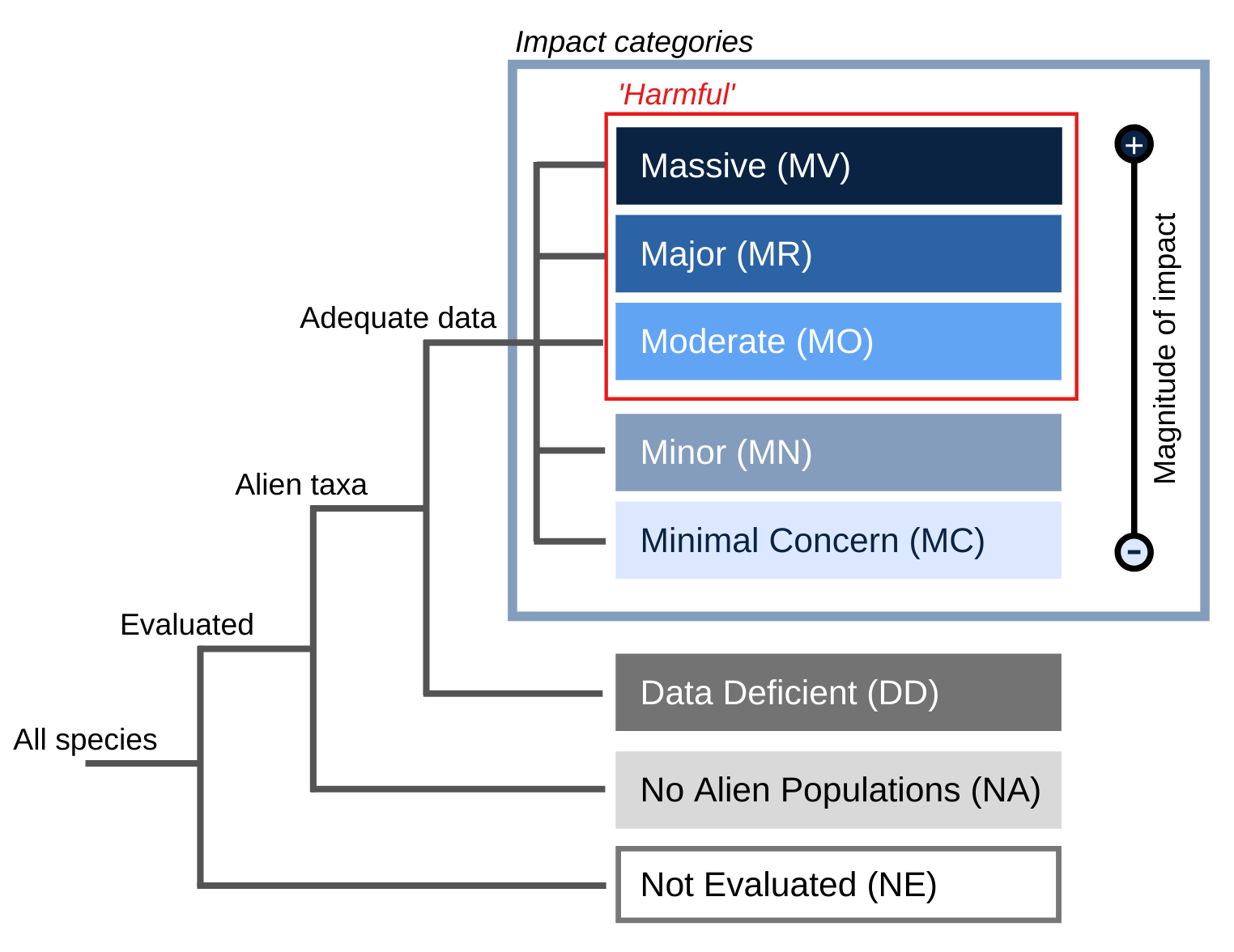- General
- Distribution
- Impact
- Management
- Bibliography
- Contact


Polygonum perfoliatum , L.
Principal source: Mile - A - Minute weed: Polygonum perfoliatumL. (Okay, 1999)
Compiler: National Biological Information Infrastructure (NBII) & IUCN/SSC Invasive Species Specialist Group (ISSG)
Review: Michael Van Clef, The Nature Conservancy. USA
Publication date: 2011-11-09
Recommended citation: Global Invasive Species Database (2025) Species profile: Persicaria perfoliata. Downloaded from http://www.iucngisd.org/gisd/species.php?sc=582 on 17-11-2025.
Preventative measures: Considering the potential of invasiveness and the very limited distribution of Persicaria perfoliata (=Polygonum perfoliatum) in the EPPO region, the EPPO Secretariat considered that this species could be added to the EPPO Alert List. P. perfoliata was included in the EPPO A2 List (pests locally present in the EPPO region). As of September 2009, nine species including P. perfoliata (Crassula helmsii, Eichhornia crassipes, Heracleum sosnowskyi, H. persicum, Hydrocotyle ranunculoides, Lysichiton americanus, Pueraria lobata, Solanum elaeagnifolium) have been subject to Pest Risk Assessments (PRAs) and are now recommended for regulation to the 50 EPPO countries. All these species have a limited distribution within the EPPO. P. perfoliata, H. sosnowskyi, H. persicum, S. elaeagnifolium fall into a category of species that have been unintentionally introduced as contaminants associated with international movement of various commodities and articles, including soil and vehicles (EPPO, Archives, 2007; Brunel & Petter, 2010)
In the USA, P. perfoliata has been classified as a 'Class A noxious weed' in the states of Alabama and North Carolina; as a 'invasive banned weed' in the state of Connecticut; as 'prohibited' in Massachusetts; as a 'Prohibited noxious weed' in Ohio; as a 'noxious weed' in Pennsylvania and a 'plant pest' in South Carolina (USDA, NRCS, 2011)
Physical: Hand pulling of seedlings is best done before the recurved barbs on the stem and leaves harden but may be done afterwards with the help of thick gloves. Removal of vines by hand may be conducted throughout the summer, if tough gloves and protective clothing (coveralls) are worn to avoid the skin shredding ability of the recurved hooks. The delicate vines can be reeled in fairly easily and balled up in piles that can be left to dehydrate for several days before disposal. The site must be rechecked at frequent intervals, and removal of new plants should continue until the seed germination period is complete, roughly early April until early July in the mid-Atlantic region of the United States. Physical removal is not recommended after fruit production begins in July (in the mid-Atlantic region of the U.S.) because it will aide dispersal of the species (Van Clef, pers.comm 2004). Repeated mowing or trimming of plants will prevent the plants from flowering and thus reduce or eliminate fruit and seed production. Cultural methods can be utilized to discourage the introduction of P. perfoliatum to an area. It is important to maintain vegetative community stability and to avoid creating gaps or openings in existing vegetation. Maintaining broad vegetative buffers along streams and forest edges will help to shade out and prevent establishment of this weed. This will also help to reduce the dispersal of fruits by water.
Mechanical: Mechanical control is ineffective as seeds are often left behind (Oliver, 1996).
Chemical: Studies have shown that pre-emergence applications of herbicide are most effective in controlling mile-a-minute weed, with the herbicides Oust, Velpar L, Arsenal, Aatrex, Pursuit and Pursuit Plus being the most effective. Roundup and Arsenal are best for post-emergence control (McCormick and Hartwig, 1995). Herbicidal soap, helps burn back foliage of P. perfoliatum. Because these products do not have the systemic (i.e., travels to the roots) ability of herbicides like glyphosate, they must be reapplied all season long to any regrowth. Glyphosate (e.g., Roundup for upland areas and Rodeo for wetland applications), applied at a low rate will probably be effective in killing the weed.
Biological: A number of potential biological control agents for P. perfoliatum have been identified in China. The weevil Rhinoncomimus latipes (Coleoptera: Curculionidae) was regarded as the most promising agent (Ding et al. 2004). This study concluded that R. latipes is a host specialist for P. perfoliatum and would have minimal potential non-target effects if released in the U.S.A (Colpetzer et al. 2004).\r\nOther possibilities included the oligophagous leaf beetles Smaragdina nigrifons (Coleoptera: Eumolpidae), Gallerucida bifasciata (Coleoptera: Chrysomelidae) and Galerucella placida (Coleoptera: Chrysomelidae), and the geometrid moth Timandra griseata (Lepidoptera: Geometridiae). These all impacted the growth and reproduction of P. perfoliatum. The bug Cletus schmidti (Hemiptera: Coreidae) and the sawfly Allantus nigrocaerulleus (Hymenoptera: Tenthredinidae) were recommended for further trials of host specificity (Ding et al. 2004). Timandra griseata was found to have too broad a host range to be considered for release in the U.S.A., as it also fed on common buckwheat (Fagopyrum esculentum) and tartary buckwheat (Fagopyrum tartaricum). Homorosoma chinensis (Coleoptera: Cureulionidae) is possibly host-specific to P. perfoliatum, but further trials are needed with other potential host plants before its release in the U.S.A. could be recommended (Price et al.. 2004).








